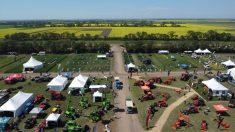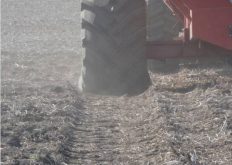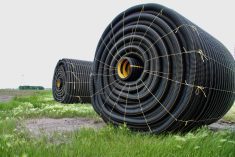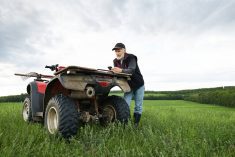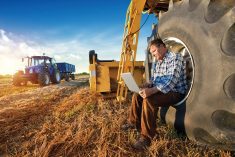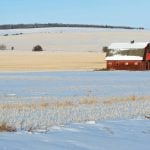Harvest is a hectic time on any farm, but for operations requiring large amounts of machinery and manpower to bring in the crops before killing frosts, the logistics can be particularly daunting.
For Garrett Johner, who farms 35,000 acres of canola, durum and green peas near Macoun, Sask., the solution was a precision ag app called Launch Pad.
Launch Pad is an interactive software tool that helps farmers plan their seeding, fertilization, spraying and harvest operations. It focuses on the cohesive movement of equipment in the field by creating a set of custom path plans that eliminate unnecessary travel.
Read Also
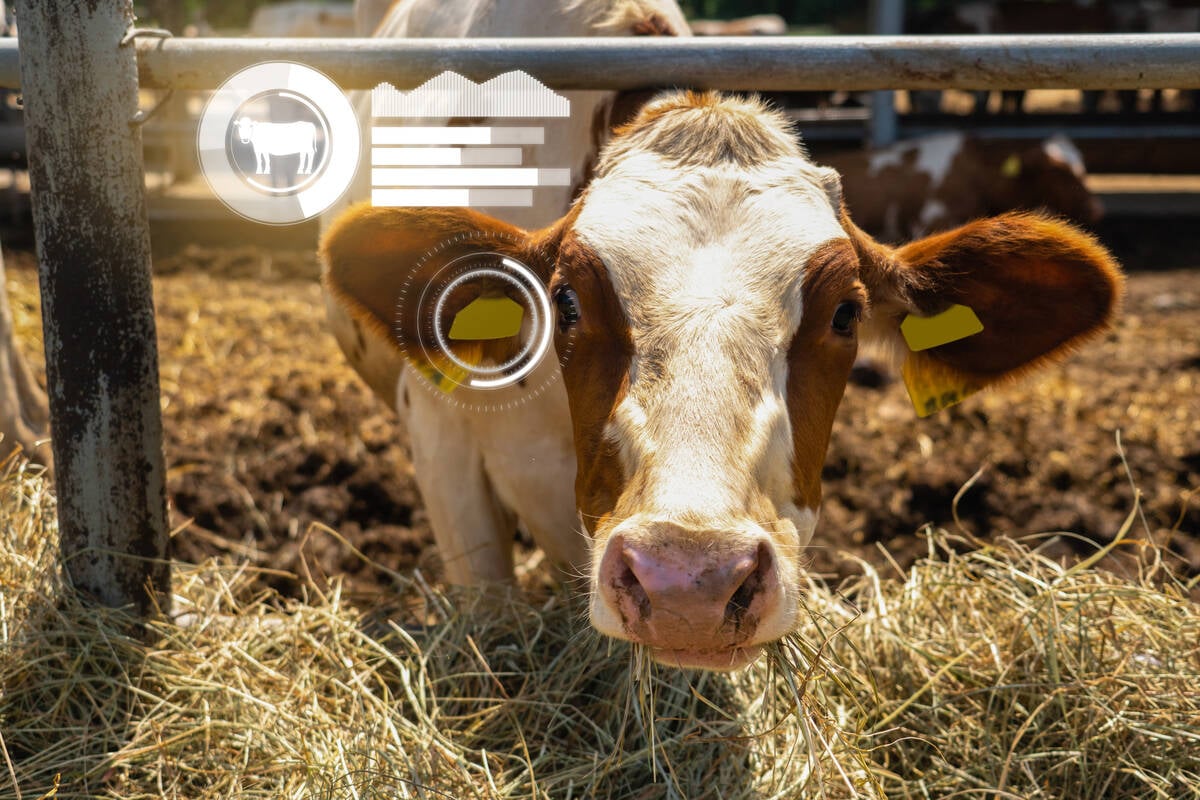
Cows in the cloud
Beef cattle herd management software has become an essential tool over 15 years for Lonesome Dove Ranch in Saskatchewan.
Johner says before he started using Launch Pad three years ago, there were times during the busy harvest season when machinery operators — sometimes eight or nine of them together in one field — were uncertain about things like where to go or just how much distance to leave between themselves and the next combine. Launch Pad has changed all of that.
“This takes the guesswork out of it (and) it allows us to do that field as efficiently as possible,” says Johner. “It has made it a lot easier for the operators, especially less experienced operators. There’s no confusion, there’s no bumping into each other, there’s no misses. When a machine meets up with another machine, it’s bang on. There are no strips (left to do) or huge overlaps.
“We think it’s a huge time saver in the field (and) it’s just so much easier to communicate with the team,” he adds. “I think Launch Pad is a great tool for guys who have multiple machines in the field at once. I think that’s where it really shines.”
Maps machines to complexity of fields
Chad Matthies is vice-president of enterprise operations with Verge Agriculture, the Alberta company that makes Launch Pad. He says in addition to its operational planning benefits, Launch Pad makes it much easier for producers to tackle fields with complicated obstacles.
“Not all fields are simple, square quarter-section fields,” he says. “A large amount of them are rather complex with curves and jagged lines and sloughs or other obstacles. We essentially map a machine or equipment to the complexity of an actual field.”
Launch Pad is easily integrated into GPS guidance systems, requires no extra hardware and is compatible with major equipment brands such as John Deere, Case New Holland, Trimble, Raven and AGCO.
Matthies says by limiting the number of tracks in a field, Launch Pad can reduce soil compaction and the problems associated with it. He notes the tool can also reduce pressure on producers feeling the squeeze in today’s high-cost environment.
“The challenge right now, farmers are paying historically high prices for everything they’re doing across the operation, every piece of equipment they own or lease, every field they purchase or lease, every granule of urea, every seed,” says Matthies. “It’s extremely high cost and margins are shrinking.”
Matthies maintains Launch Pad enables farmers to save time and money by being more efficient, getting more done in less time and slashing downtime in field operations. By preventing overlaps, Launch Pad can reduce overapplications of seed, fertilizer and crop protectants, he says, and optimizing field traffic can also mean fuel savings and less wear and tear on farm vehicles.
The cost for Launch Pad is 75 cents per acre for a one-year deal or 50 cents per acre for a three-year contract.
Johner purchased the three-year option and spends about $15,000 per year on Launch Pad. “I think it’s definitely a worthwhile investment,” he says. “It doesn’t take long on a farm, especially one that’s our size, to make up $15,000 in savings with this program.”
Verge Agriculture has released a new Launch Pad feature that visually represents coverage and overlap related to a planned operation. It uses information on the field boundary along with the width of a farm machine or implement being used and the accuracy of the GPS guidance system to provide a visual outline of the overlap from any operation in a specific field. It will also calculate the acreage produced by that overlap as well as the field percentage of the overlap.
“There’s really nothing out there like it today,” says Matthias. “It helps showcase what overlap there is and what the coverage looks like in a field. And what’s unique about it is it’s a matter of seconds and you will have that information…. It’s that quick.”
Helps prevent mistakes
Eric Nikolejsin is a producer who grows canola, wheat, durum, peas, lentils and flax on his 15,000-acre farm near Fillmore, Sask. He’s been using Launch Pad for three years and recommends it for growers looking to optimize the number of passes in their fields.
“With this program, you can set the number of headlands you want to do. You can set any angle under the sun. It will also take whatever boundary you have set and will tell you the optimal angles and the optimal number of passes you should do,” says Nikolejsin.
“We have lots of employees who run all of our equipment for us. This is one way of taking another variable for error out of the equation because (employees) can jump in the equipment and the GPS line is right there. They don’t have to worry about making one or trying to get the right angle or whatever. The line is there, and they just go.”
Nikolejsin says Launch Pad comes in handy for the many trials he conducts on his farm. He estimates he does 18 to 20 of them a year, assessing things like seeding rates and top dressing fertilizer applications as well as different fungicides and crop varieties. “Data is a big thing on our farm,” he says.
Nikolejsin notes Launch Pad has proven very useful in identifying the best spots to do all of those field trials. Like on most farms, the equipment and implements he uses are different widths, but the tool makes it easy to see where traffic is optimized, so the trials have the best chance of success.
“With (Launch Pad), we can make lines for our seeder tractors, lines for our spin spreader, lines for our sprayers, lines for our combines,” Nikolejsin says. “We can then sit down with our agronomist and give her all of those lines we’ve made for one field. She will lay them into a program on her computer and then we’ll try to fit our trials in to best match all of our different lines.”
Nikolejsin says Launch Pad also enables every equipment operator on the farm to know precisely where those trials are, which can prevent some costly mistakes.
“At harvest, we’re running four combines, two grain carts and four semis, so we have a lot of people around. If one of your guys doesn’t know that trial is in there … they can go and cut right through the middle of it. We spend all of this time all year trying to produce this data that we want, top dressing, seeding rate, whatever it was, and all of a sudden, it’s gone,” he says.
“What we’re doing is we’re saying there’s a seeding trial in one field between say lines 38 and 42. This way, everybody knows if you’re in the sprayer or you’re in the combine or whatever you’re doing, that’s the trial spot.”




